Pine Warblers (Setophaga pinus) are common in eastern pine forests. These long-tailed warblers are hefty with a stout bill. They are small, measuring about 5.1-5.5 inches with a wingspan of 7.5-9.1 inches, and they weigh about 0.3-0.5 oz. The Pine Warbler is yellowish with an olive back, a whiteish belly, and two prominent white wing bars on gray wings. Adult males are brighter than females; females and immatures are more subdued in color and can even appear gray-brown. Pine Warble can be difficult to see as they perch high in pines. Compared to other warblers, this species is not heavily patterned.
Pine Warblers are well-named as they spend most of their time in pine trees. Pine Warblers live in pine or mixed pine-deciduous forests in the eastern United States. Northern populations migrate to the southeastern United States during winter. Individuals that breed in the southeast typically stay there year-round.
Insects make up most of their diet, which mainly consists of caterpillars and other arthropods, including beetles, grasshoppers, bugs, ants, bees, flies, cockroach eggs, and spiders. However, in colder months, they will eat fruits and seeds, notably pine seeds. While foraging, they will hop along branches as they pick food from bark and needles. Pine Warblers can also feed on the ground and catch insects in the air.
Males are aggressive in the early breeding season; they chase other birds and indicate aggression by gliding or flying with stiff wingbeats around their opponent. Sometimes during a fight, they fly toward each other and lock bills in the air. In winter Pine Warblers will forage in mixed-species flocks. In late winter or spring, males will establish breeding territories by singing persistently and chasing intruders.
Nests are almost always built in pine trees, usually high in the tree and concealed among needles and cones. The female will gather most of the nest material and bind the nest with sider or caterpillar silk. The female can begin laying eggs in 14 days once the nest is finished. The male will often escort the female as she gathers nest materials and occasionally will help build. There are 3-5 eggs in a clutch, with only 1-2 young hatching. The incubation period is 10-13 days, and it takes about 10 days before the offspring can leave the nest. Eggs are white, grayish, or greenish-white with brown speckles. The offspring are undeveloped and downy. Parents will perform the broken wing display to lure predators away from the nests. After the young fledge, the warblers will move around in family groups.
Pine Warbler populations are steadily increasing, indicating this species is a low conservation concern. Across much of their range, the pine forests have been altered or destroyed by logging, development, and fire suppression. However, over the last few decades, Pine Warblers have moved into deciduous forests where pines have been introduced.

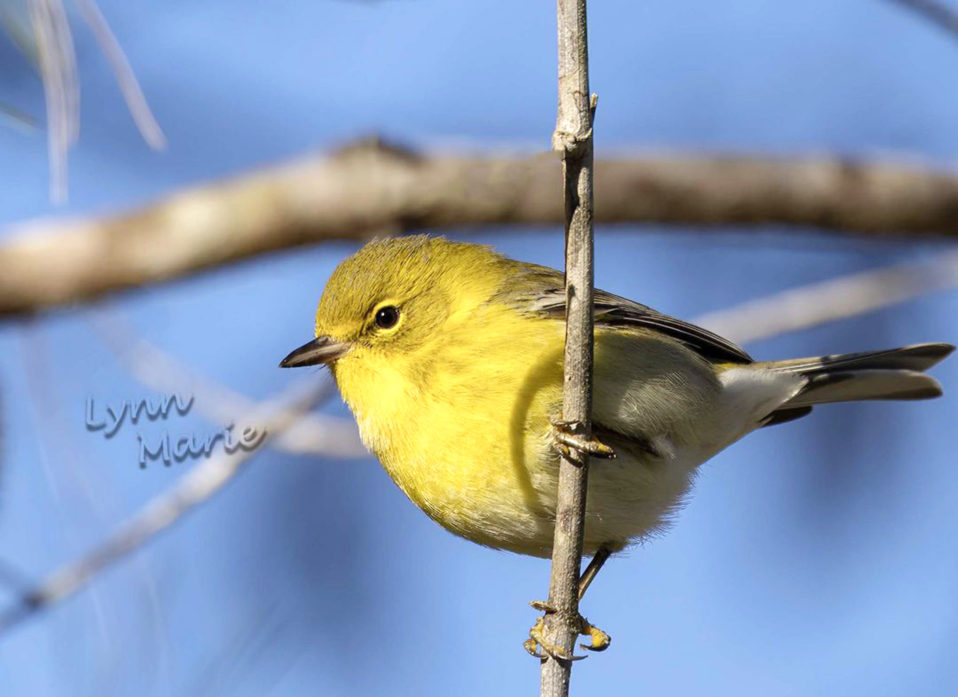
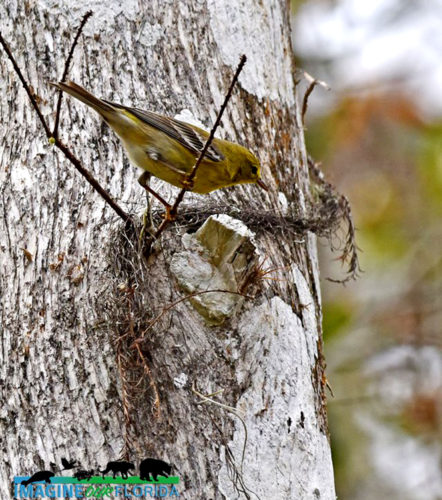
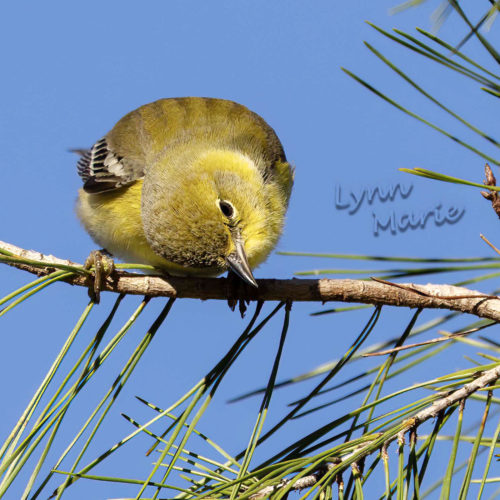
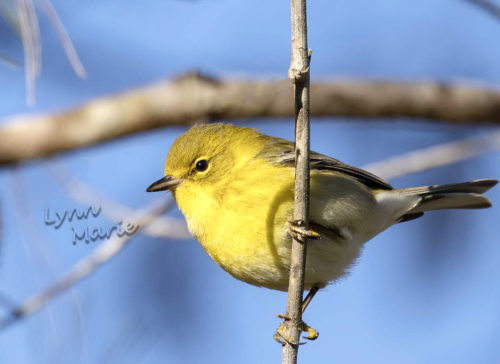
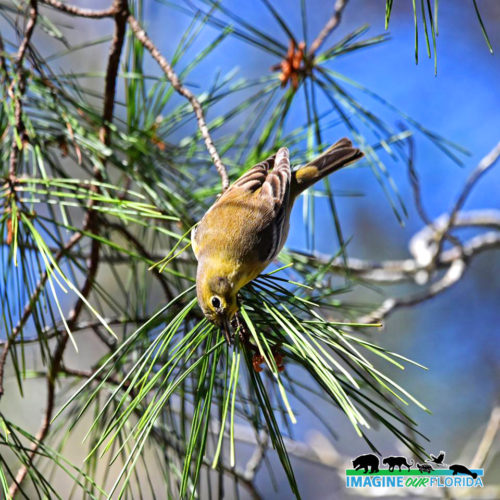
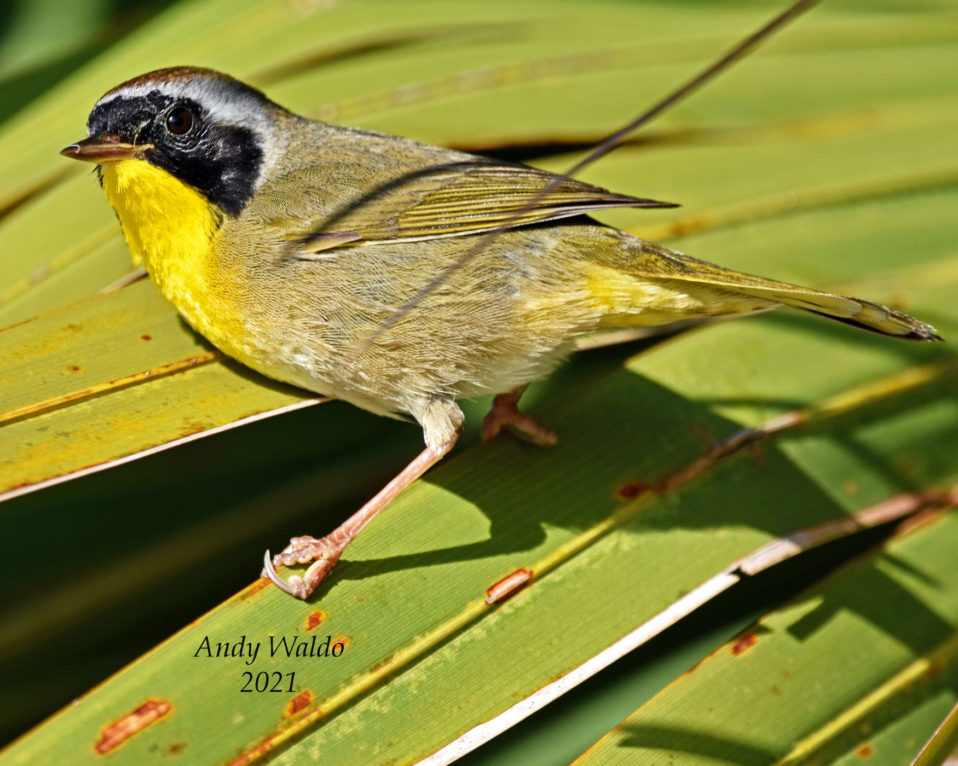
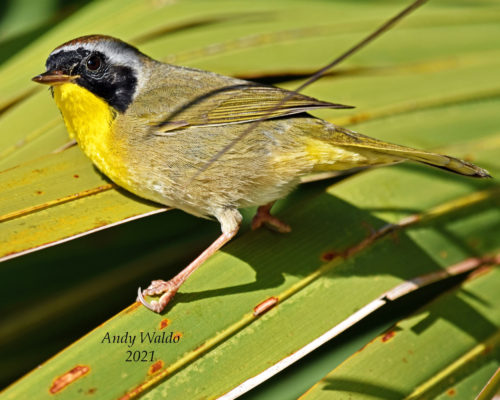
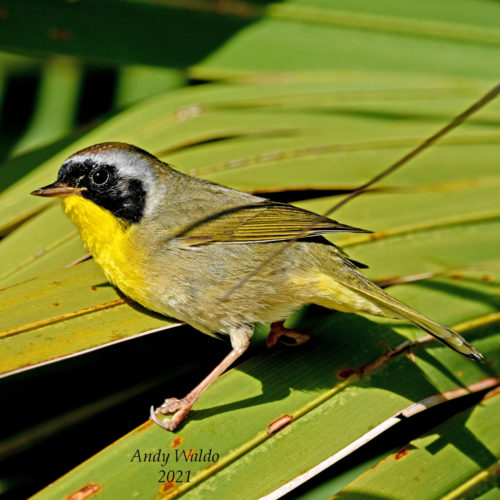
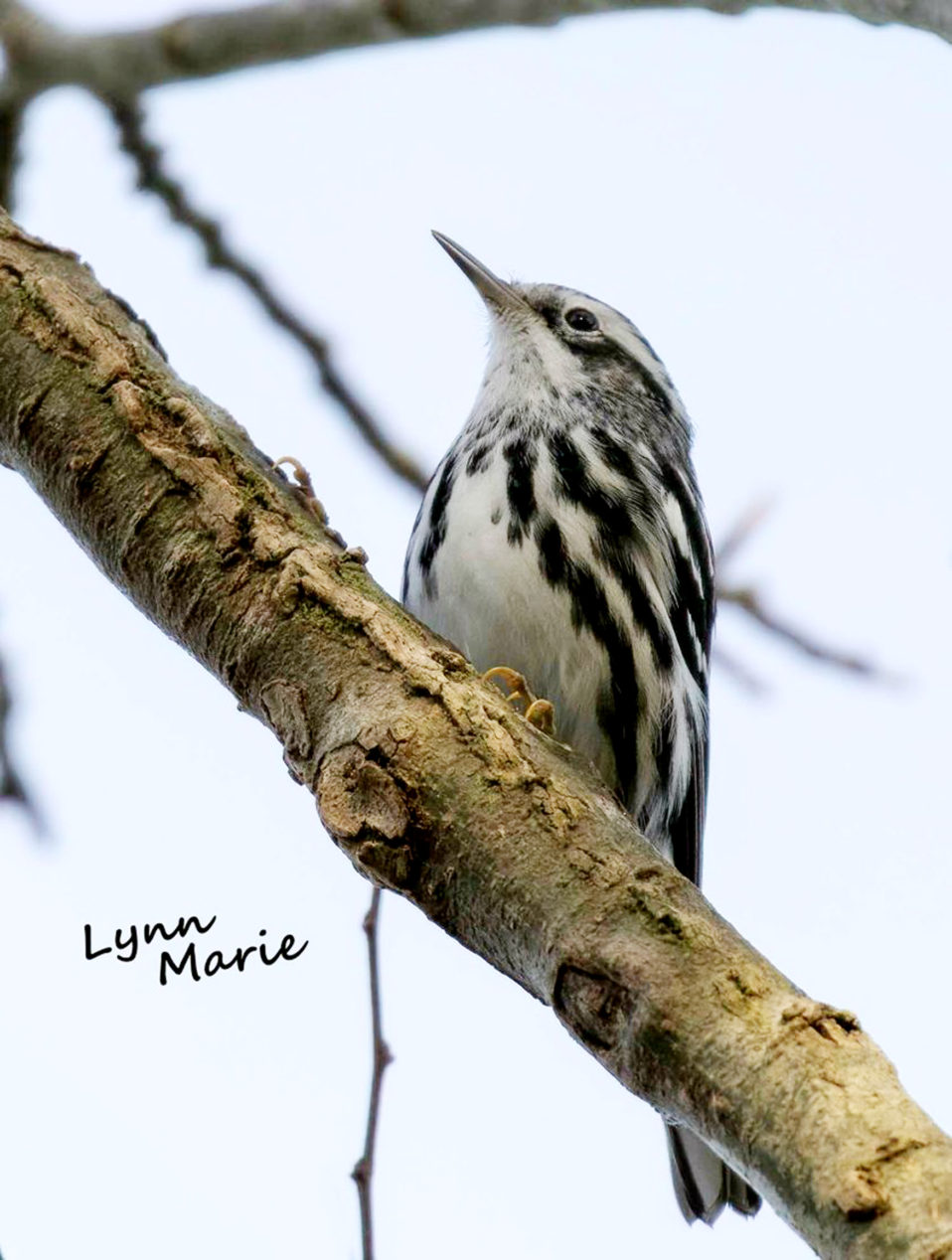
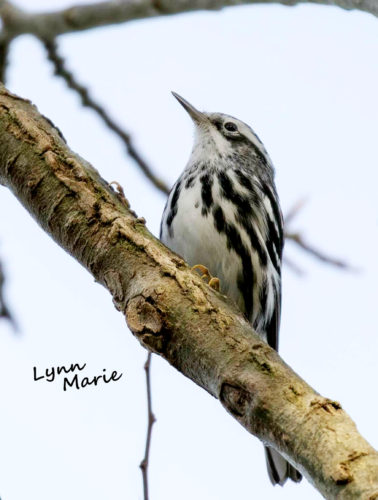
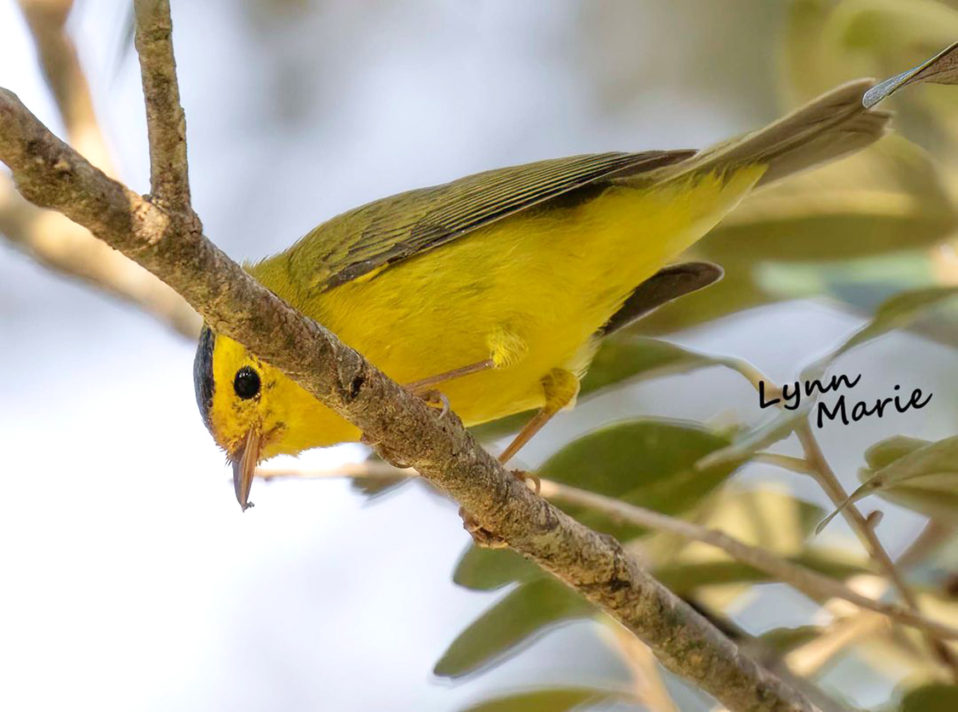
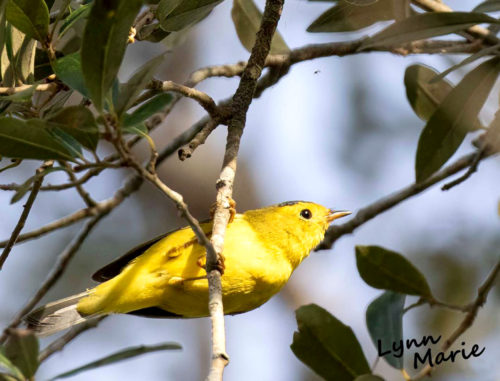
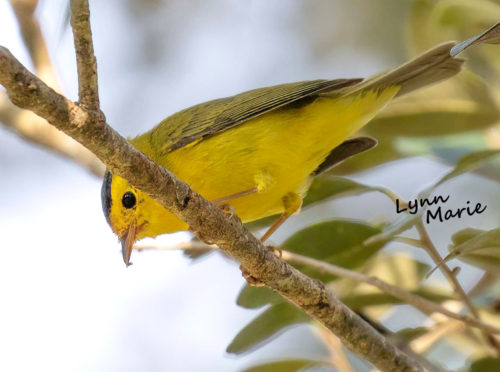
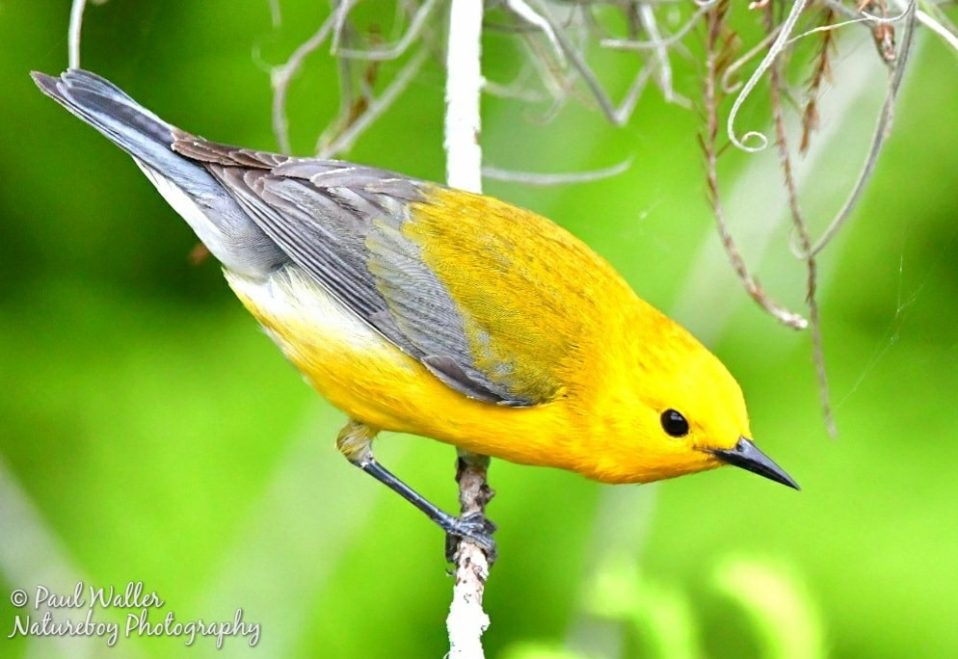
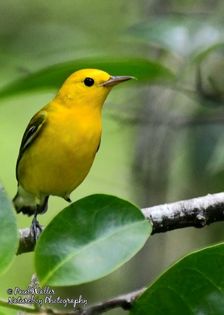
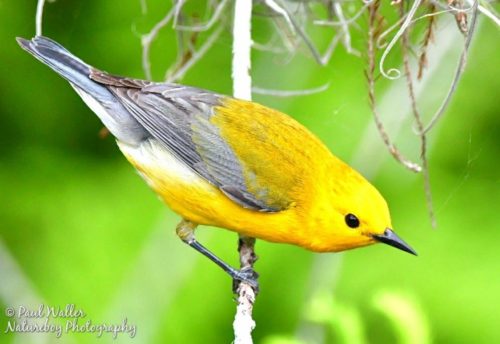
Recent Comments